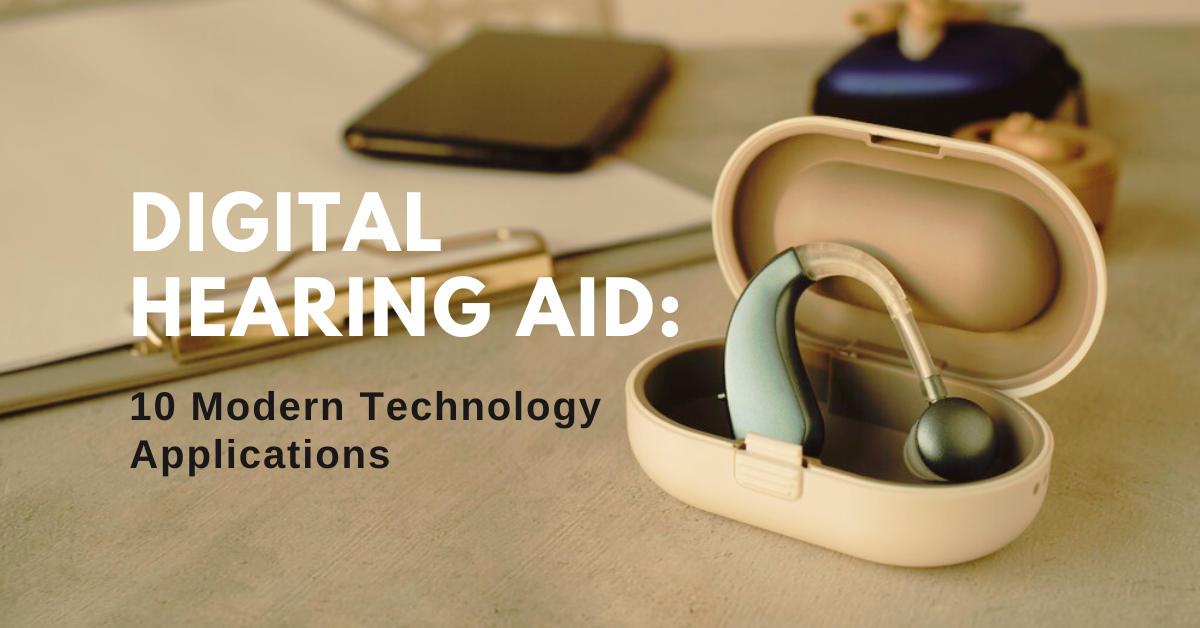In the era of technological evolution, digital hearing aid technology has witnessed a significant enhancement in recent years. Integrating modern technology into hearing devices has helped a greater section of the population suffering from hearing loss (around 430 million people according to WHO) improve hearing experience and quality of life. This article will explore the top 10 applications of advanced technologies in hearing devices in detail.
1. Artificial Intelligence (AI)
AI technology is being actively employed in digital hearing aids to improve user experience among people suffering from hearing impairment. Some of the applications of AI in hearing aid include:
- Employing speech recognition technology to detect common voices and improve speech clarity.
- Enabling integration with smart devices to allow controlling of hearing devices, adjusting sound settings, and streaming audio remotely.
- Integrating fitness and wellness functionality to track health progress and workout activities.
- Incorporating intelligent sound processing technology to reduce background noise in high-noise environments.
- Using machine learning and deep learning algorithms to deliver intelligent volume control, personalized sound adjustments, and sound preference settings.
2. Bluetooth Connectivity
Similar to modern headphones, individuals can now connect digital hearing devices with their mobile phones and other IoT devices. Therefore, Bluetooth connectivity enables individuals to stream their favorite music, podcasts, and TV shows from their hearing devices. Furthermore, Bluetooth connectivity allows individuals to attend calls using the hearing device. Hence, this wireless technology enhances the listening experience and ensures seamless communication.
3. Binaural Processing Technology
Although the common belief is that one hearing aid is enough for the bad ear, the reality is quite the opposite. Two hearing aids provide the best hearing experience to hearing loss-affected people. The modern binaural process technology acts as a bridge between these two devices. This technology helps the pair of hearing aids to communicate wirelessly and replicate the brain’s ability to process information from both ears for an effective hearing experience.
4. Directional Technologies
Modern hearing devices integrate direction technologies to improve sound and speech clarity in noisy environments. This technology employs directional microphones and motion sensors to focus on sounds from a single direction and eliminate sounds from other directions. Hence, this technology improves the signal-to-noise ratio (SNR) and provides a better, comfortable hearing experience.
5. Environment Detection & Adjustment Automation
Many digital hearing aid come with automatic environment detection and adjustment technology. This technology enables the hearing device to scan the surrounding environment 10,000 times a second based on your movement. Furthermore, they automatically adjust the settings to deliver a clear and natural sound. Hence, with modern hearing aids you no longer have to fine-tune your settings manually again!
6. Noise Reduction & Speech Enhancement Technologies
Modern hearing devices provide noise-reduction technology. This technology uses advanced algorithms and sound processing techniques to detect and eliminate unwanted external noise. The reduction of irrelevant background noise helps to reduce ear strain in noisy surroundings and improve the hearing experience.
Digital hearing aids also use speech-enhancement technology to enhance speech intelligibility. This technology employs deep-learning algorithms to distinguish speech from external noises and ensure speech clarity.
7. Rechargeable Batteries
Digital hearing aids now come with cost-effective and environment-friendly rechargeable lithium-ion batteries. These batteries remove the hassle of replacing tiny batteries. Furthermore, modern hearing devices come with portable charging cases that keep these devices operating all day long.
8. Smart Applications
Modern hearing devices also provide separate applications that individuals can use to change device volume or program right from their mobile phones. These applications can be found in both the App Store (for iOS devices) and Play Store (for Android devices).
9. Telecoil (t-coil)
Telecoil or t-coil refers to a small coil of wire used in hearing aids. This wire picks up electromagnetic signals from compatible devices. Furthermore, it allows direct audio input from phones and public sound systems. Moreover, it reduces background noise and improves sound clarity for individuals suffering from hearing loss. This technology enables clearer communication in noisy environments and enhances the hearing experience for users.
10. Tinnitus Masking
Modern digital hearing aid integrated with tinnitus masking/management features can relieve individuals with ringing in the ears. These devices enable audiologists or hearing aid clinics to customize and deliver a soothing sound stimulus that helps manage and relieve tinnitus.
Conclusion
In the upcoming years, digital hearing aids will provide greater features and functionality to users due to advancements in technology. Not only will devices address common hearing issues like tinnitus but will improve the hearing experience for those with severe or permanent hearing impairment. However, before using any such technologically advanced hearing devices, individuals must consult with their audiologists or hearing aid clinics for the best experience.

